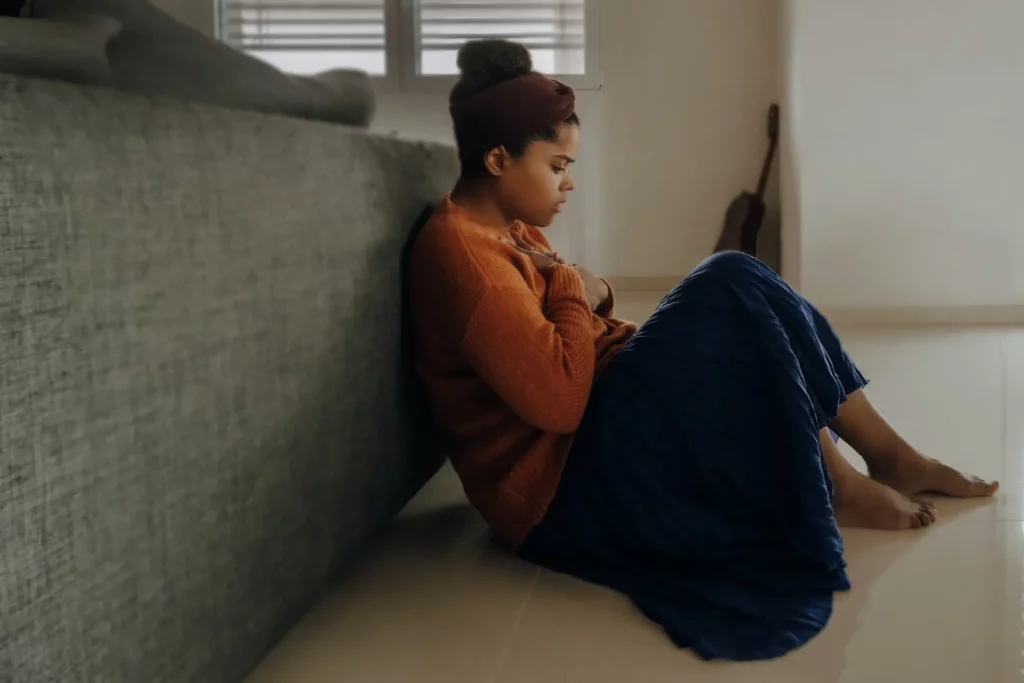
Anxiety can majorly impact the daily lives of autistic people, especially since it’s a common health problem in autistic adults and children. It makes it difficult for them to cope at school or work. It’s unsure why most autistic people have anxiety, but each person has different triggers and approaches to manage the symptoms.
In this article, we examine how anxiety can impact you if you are autistic. We also cover the symptoms and treatment options to consider.
How Does Anxiety and Autism Overlap?

The rates of anxiety are higher in autistic people than in allistic (non-autistic) people. Anxiety disorders affect about 18% of the general population in the United States, making it the most common mental disorder. However, the numbers skyrocket in people with autism spectrum disorder: almost 40% of children and 50% of adults experience some type of anxiety disorder, according to a study carried out at the University of Amsterdam.
Autism and anxiety overlap in different ways. In fact, a study carried out at the National University of Singapore, revealed that poor social skills related to autism spectrum disorders increase the risk of developing social anxiety, while repetitive behaviors and aversive sensory experiences increase the chances of suffering from obsessive-compulsive disorder.
For one, autistic people pay great attention to detail, but this can lead to anxiety when they are forced to change or shift their attention from their routine suddenly. Comorbidities are very high: 30% of people with autism develop specific phobias, 17% an obsessive-compulsive disorder, 15% generalized anxiety and 2% suffer panic attacks.
People on the autism spectrum might process language differently, which means their anxiety could increase when others cannot understand them. There is also a link between social situations and autism, especially with those who experience social anxiety. Furthermore, autistic folks might feel anxiety when carrying out a task.
Autistic people also experience social pressures as they deal with the stress of living in a world where they don’t feel like they belong. Feelings of loneliness and displacement can intensify anxiety symptoms. Finally, if the autistic person does not have enough support from family and friends, they could become more anxious.
Fortunately, there are different treatments for these patients, such as ABA therapy and CBT. However, as adults and children with autism suffer from different types of anxiety, it is important to carefully evaluate their case to choose the most appropriate treatment.
Symptoms of Anxiety in Autism
There are different ways to identify anxiety in autistic persons. Anxiety occurs when the feelings of panic and worry become overwhelming, so the person cannot control it. Some physical symptoms of anxiety include a racing heart, feeling shaky, shortness of breath, shakiness, agitation, and distress.
There are also behavioral symptoms that autistic people experiencing anxiety would exhibit. When anxious, a person may avoid situations like going to school or work due to social anxiety disorder.
They might overthink things, display repetitive behavior, run away, constantly seek reassurance, and show a more rigid preference for routine. Complete overwhelm can result in meltdowns, outbursts, and, in worst-case scenarios, self-harm.
Some triggers can cause feelings of anxiety in autistic persons. Common triggers are uncertainty and change, as most people on the spectrum prefer to stick to a routine. Other triggers can include sensory triggers, pressures and demands, social situations, phobias like dogs, crowds, or needles, and having to go to school or work.
Treatment Options for Autistic Persons

Although there are not many studies on the treatment of anxiety in autistic persons, there are some proven treatment options. These include applied behavioral analysis (ABA) therapy, cognitive behavioral therapy (CBT), interoceptive therapy, and alternative augmentative communication (AAC). Sensory diets, expressive art therapy, exercise, and medicine are also suitable, depending on the patient and their specific needs.
ABA Therapy
Applied behavior analysis therapy is a type of therapy based on learning and behavior. It helps autistic children learn skills by reinforcing certain behaviors, as they would learn how to repeat them. This kind of therapy can help alleviate anxiety indirectly because, by developing their autonomy and independence, it allows them to better manage the demands of the environment, which reduces the level of stress to which they are exposed on a daily basis.
Cognitive Behavioral Therapy
Cognitive behavioral therapy is also a common treatment for those with anxiety. It focuses on helping autistic people deal with overwhelming problems and improve their feelings. Cognitive behavioral therapy involves breaking the problems into small parts and helping the patient deal with them.
Interoceptive Therapy
Interoceptive therapy is a form of exposure therapy recommended to autistic adults with anxiety. It helps people identify the physical feeling of anxiety and recreate this. By facing their fear, they would be able to decrease it. Note, however, that exposure therapy must always be conducted safely and ethically by certified professionals – never try this out on your own or with someone you know.
Alternative Augmentative Communication
Alternative augmentative communication is a suitable form of therapy for autistic persons who struggle with speech. It provides an alternative form of speech, including aided and unaided communication, which can help them better manage social situations and prevent them from becoming a permanent source of stress.
Final Thoughts
Anxiety can have a negative impact on the daily lives of autistic folks. It can occur because of their language processing, social pressures, changes in routine, and more. Autistic adults or parents of autistic children need to identify their anxiety symptoms and work with professionals to tailor effective treatment options.
References:
Nimmo, V. et. Al. (2020) Anxiety Disorders in Adults with Autism Spectrum Disorder: A Population-Based Study. J Autism Dev Disord; 50(1): 308–318.
Liew, S. M. et. Al. (2015) The relationship between autistic traits and social anxiety, worry, obsessive-compulsive, and depressive symptoms: specific and non-specific mediators in a student sample. J Autism Dev Disord; 45(3): 858-872.
Van Steensel, F. et. Al. (2011) Anxiety Disorders in Children and Adolescents with Autistic Spectrum Disorders: A Meta-Analysis. Clin Child FamPsycholRev; 14(3): 302–317.




Leave a Reply